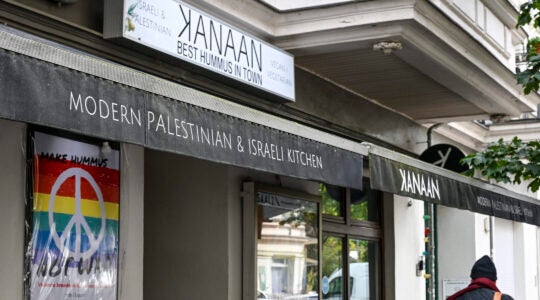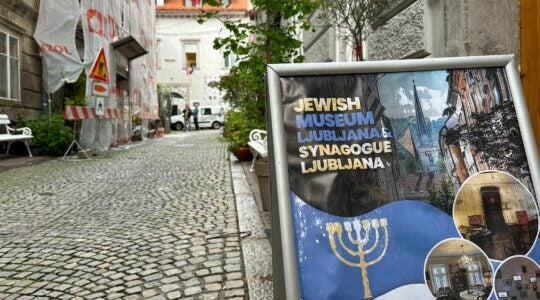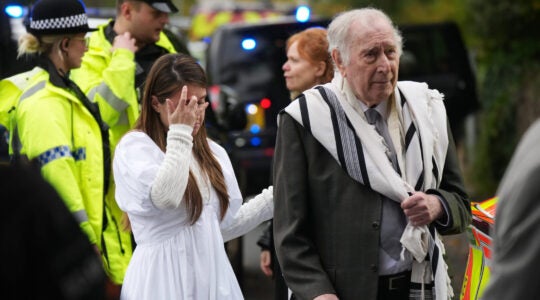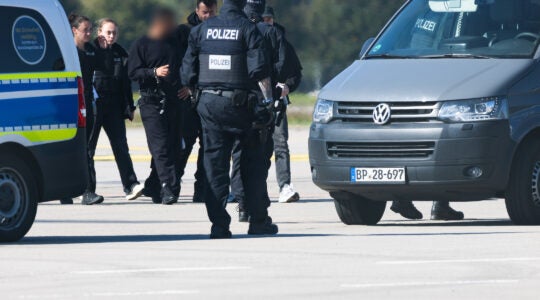ISLA DE SAN ANDRES, Colombia – This tiny, palm-fringed island off Nicaragua’s Atlantic coast seems like an idyllic Caribbean paradise. Duty-free shops, resort hotels and rustic snack bars line streets filled with European scuba divers on holiday.
But a powerful Arab presence here has led to claims that a place famous for snorkeling and scuba diving is becoming a hotbed of Hezbollah terrorist activity.
Ely Karmon, director of Israel’s Institute for Counter-Terrorism in Herzliya, says that since the 1980s Hezbollah has been recruiting and raising money from Lebanese and Syrian immigrants living in three specific areas of Latin America and the Caribbean: the tri-border area where Argentina, Brazil and Paraguay meet, Venezuela’s Margarita Island and the Caribbean coastline of Colombia, including Maicao and San Andres.
“In all three areas you have Lebanese Shi’ite communities,” Karmon told JTA. “Latin America is a soft-belly target because nobody is prepared – not the law enforcement authorities, not the public, not anyone.”
Others say the threat is overblown.
Chris Zambelis, a Middle East analyst with the Jamestown Foundation, a Washington-based think tank, says offshore islands like San Andres and Margarita do have large numbers of Muslims, but that “there’s no evidence at all” to suggest that local Arab merchants are financing Hezbollah activities overseas.
“Colombian and regional governments have played on U.S. concerns by moving to curry favor with the United States to further their own domestic agendas and international standing,” Zambelis wrote in a policy paper last year. “In doing so, they often highlight the alleged threat of al-Qaida or other brands of radical Islamist terrorism within their own borders.”
The very idea of linking San Andres with Hezbollah is a stretch of the imagination, insists Bashir Harb, the secretary of the board of directors of the Centro Islamico, a mosque in downtown San Andres that is a spiritual home to hundreds of Lebanese Muslims who live here.
“Here nobody is involved in Mideast politics,” said Harb, 25, whose parents left Lebanon’s Bekaa Valley and came to Colombia in 1950, when the government declared San Andres a duty-free zone. “The islenos don’t even know what’s happening in the rest of Colombia, let alone the Middle East.”
Claudia Marcela Delgado, the secretary of tourism for San Andres and the nearby island of Providencia, discount suggestions that Hezbollah maintains an active presence along Colombia’s Caribbean coastline.
“One can assume that terrorist groups exchange information,” Delgado said, “but I wouldn’t say there’s a strong presence here.”
Arabs in Latin America’s various free zones have come under increasing scrutiny since 1994, when Hezbollah agents financed by Lebanese sympathizers in the tri-border area were believed to have carried out the truck bombing of the AMIA Jewish community center in Buenos Aires. The blast killed 85 and injured more than 300.
This month, Interpol voted to issue arrest warrants for six men – five Iranians and one Lebanese – wanted for involvement in the AMIA attack.
The vote, taken at Interpol’s 76th General Assembly in Morocco, follows Argentina’s issuance last year of an international arrest warrant for former Iranian President Akbar Hashemi Rafsanjani and eight others on charges of masterminding the AMIA bombing.
As evidence of Iran’s hand in radical movements across the region, Karmon pointed to the formation a year ago of a new Iranian-backed organization, Hezbollah Latin America, which supposedly has branches in Argentina, Chile, El Salvador, Mexico and Venezuela.
“In all these countries there are Arab communities involved” in terrorist financing, Karmon said.
“There’s a big Islamic Center in Buenos Aires connected to the Iranian Embassy,” he said. “This infrastructure is kept alive for fund raising and recruitment. But the moment they decide they need to attack a target, or if the U.S. attacks facilities in Iran, Latin America could be one of the main areas for Iran – through Hezbollah – to retaliate against the U.S. or other Western countries.”
Iranian President Mahmoud Ahmadinejad, whom Venezuelan President Hugo Chavez has called “my brother,” has visited Latin America three times this year. Ahmadinejad has opened new diplomatic missions in Latin America and initiated direct weekly flights between Caracas and Tehran.
Karmon says Chavez also has allowed Hezbollah to infiltrate the Guajira peninsula shared by Venezuela and Colombia, and convert the Wayuu Indian tribe to Islam.
“In Venezuela’s case, the entire Wayuu Indian tribe simply converted to Islam because their chief, Teodoro Darnott, was a member of the pro-Chavez Grupo Nacionalista party,” Karmon told JTA. “Last summer they put up a Web site in which they threaten to organize terrorist attacks against Zionists.”
A look at that site brings up a large banner that reads “Bienvenidos – Allahu Akbar,” which means “Welcome – God is Great,” as well as color photos of kaffiyeh-clad terrorists bearing AK-47 rifles under a bilingual Arabic-Spanish caption that translates, “The sweat of the workers is as holy and glorious as the blood of the martyrs.”
But Zambelis doesn’t see the newly minted Wayuu Muslims as much of a threat to anyone.
“Whoever’s running that Web site is a crackpot,” he said. “It’s someone who is using the Hezbollah name to gather attention to his movement. There is absolutely no link between the real Hezbollah and that organization. Nobody takes him seriously.”
Earlier this year, U.S. and Trinidadian authorities arrested four men in a plot to blow up fuel storage tanks at New York’s John F. Kennedy Airport. The four allegedly had ties to an Islamic terrorist cell in Trinidad, and one of the suspects is a former member of the Guyanese Parliament.
But Karmon says his biggest worry is that Iran could deploy nuclear missiles in Venezuela, at the invitation of Chávez, in much the same way the Soviet Union sent nuclear weapons to Cuba, sparking the Cuban missile crisis in 1962.
“In my opinion, Chavez will continue to radicalize the regime internally,” Karmon said. “I know Chavez from my activity as an adviser to the Israeli Anti-Semitism Monitoring Forum, and I think he is actually a proto-fascist.
“In the 1990s he cooperated with the most hateful right-wing Argentines. He’s much worse than Fidel Castro, who was never an anti-Semite and never collaborated with these kinds of people.”
JTA has documented Jewish history in real-time for over a century. Keep our journalism strong by joining us in supporting independent, award-winning reporting.





